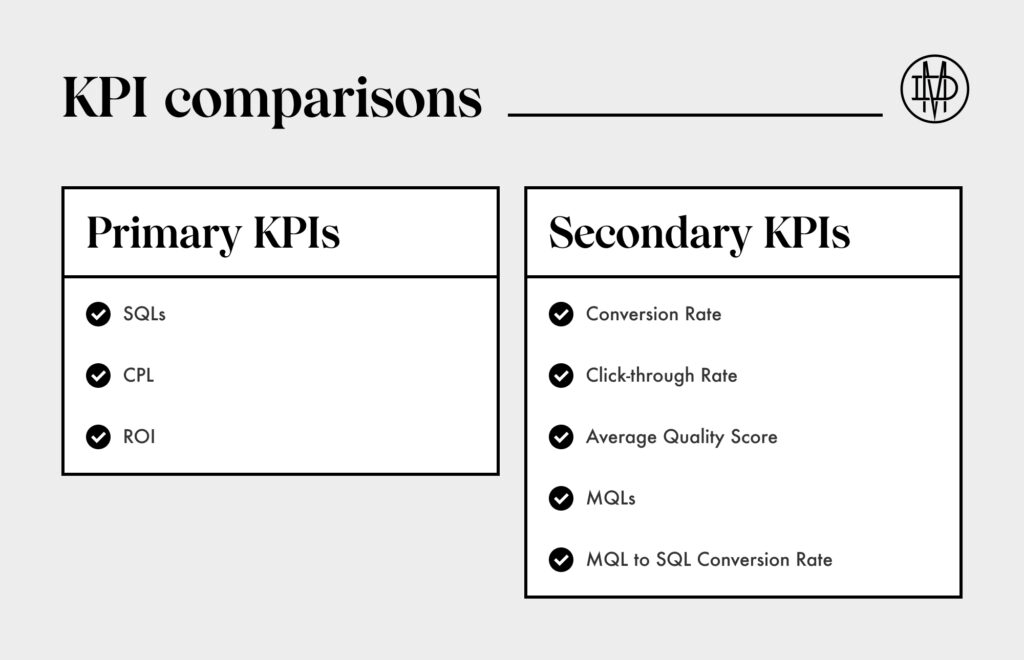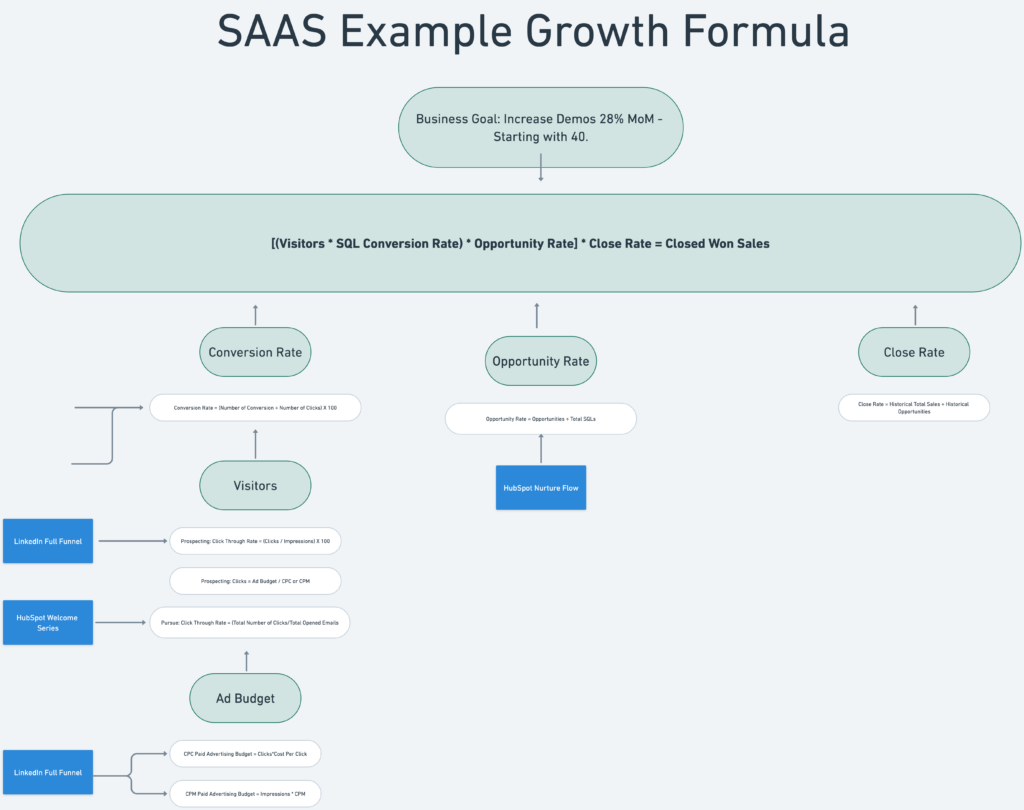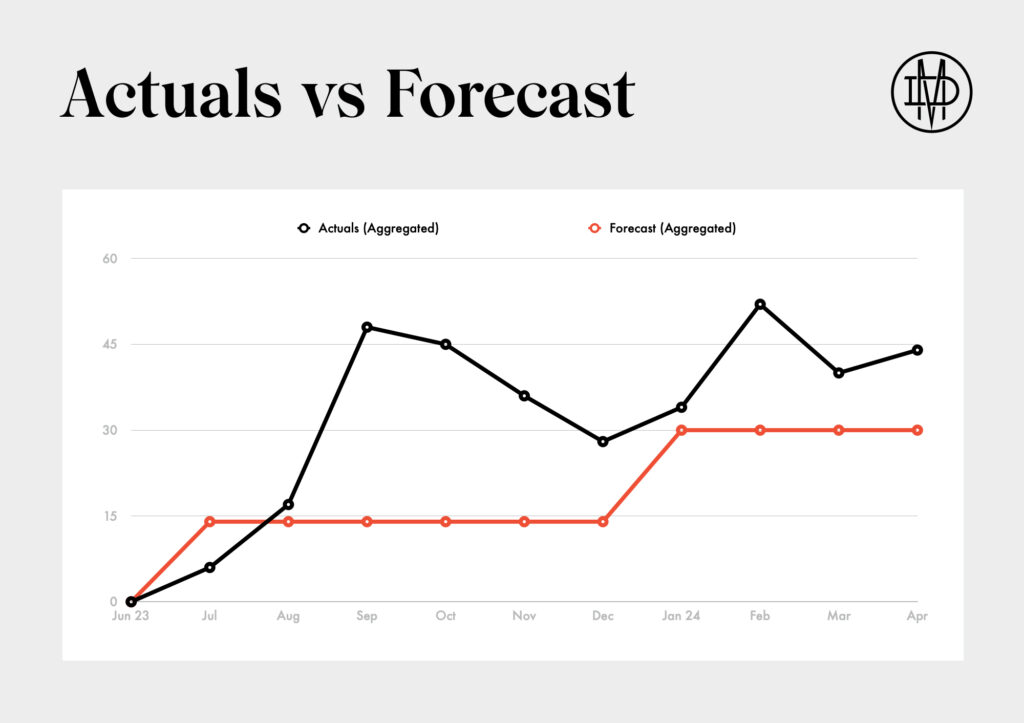
Key Performance Indicator, or KPI, is a common term used in all areas of a business to measure success. Since we are a marketing agency, the rest of this article will give information from a marketing perspective. Below we will discuss what is a KPI, types of KPIs, benefits of KPIs, how to determine which KPIs to use, examples of appropriate KPIs at different stages in the buyer’s journey, and how to report on KPIs. This gives a sneak behind the curtain of Optimal’s approach to KPIs with our clients. Let’s dive in!
What is a Key Performance Indicator (KPI)?
Key Performance Indicators (KPI) are quantifiable, measurable values that indicate if your strategy is achieving your objectives or goals. KPIs allow for analytical observation and strategic decision-making. They allow teams to review trends over time, set milestones to gauge progress, and ensure their work is clearly tied to business goals and objectives.
Primary vs Secondary KPI
At Optimal, we like to differentiate our KPIs between primary and secondary. Primary KPIs are high signals, the most important metrics that determine if our marketing strategy will achieve our client’s ultimate goals. They are closely tied to the conversion stage, or bottom of the marketing funnel.
While potentially unorthodox, we leverage secondary KPIs for other metrics that support those Primary KPIs. These are metrics that track behavior higher up on the marketing funnel. By ensuring that we are tracking and regularly reviewing these secondary KPIs, we are agile in our strategic implementations. As a result, we are more likely to hit our Primary KPIs goals at a quicker pace.
Examples of Primary KPIs include annual revenue, sales qualified leads (SQLs), return on ad spend (ROAS), return on investment (ROI), and customer acquisition cost (CAC). Most of our clients have 2-3 Primary KPIs.
Examples of secondary KPIs include conversion rate, time on page, click-through rate, cost per click (CPC), bounce rate, and marketing qualified leads (MQLs).
Below is an example of the KPIs we are tracking & reporting on for one of our clients

Benefits of Using KPIs
- Alignment: KPIs allow a shared focus for stakeholders and team members, preventing confusion on what defines success.
- Accountability: KPIs created accountability for all parties. You can’t hide behind data.
- Data-driven decisions: Key Performance Indicators provide direction and clarity to making good decisions, ensuring they are data-driven rather than from assumptions or intuition.
- Efficiency: KPIs allow you to be more focused in your work, reducing the timeline to achieving your goals and thus increasing efficiency in the execution of day-to-day tasks.
What KPIs should you use in your marketing?
What KPIs should you use in your marketing? It’s always best to start with your overall business goals and then determine what marketing should be responsible for. For example, if you are a B2B company, you likely will rely on marketing to deliver sales qualified leads (SQLs). SQLs in this case, would be your Primary Key Performance Indicator to track, strategize, and report on.
We believe once you have identified the KPI that is the lowest in the funnel that marketing can impact, you should then identify a handful of relevant and impactful secondary KPIs that clearly support the ability to achieve that primary KPI goal.

It’s also important to consider how your KPIs perform in comparison to industry standards. It can give insights into areas of your business you can adjust, emphasize, test, or change.
Lastly, you want to consider what platforms, channels, or areas of focus you are currently influencing to set those KPIs. Below are some examples of both primary and secondary KPIs to consider, broken down by areas of focus. Any area of focus that is actively being worked on should always have a KPI associated with it so you can measure the impact of your work.
Paid Ads KPIs
When selecting KPIs to track and measure performance on your paid ad campaigns, consider your campaign objective.

Organic Traffic KPIs
Since the marketing tactics related to driving organic traffic are SEO related, important KPIs to track are % increase of organic traffic, keyword ranking, organic leads/organic revenue, conversion rate.
Website and Landing Page KPIs
Common KPIs related to website and landing page marketing initiatives include conversion rate, time on page, bounce rate, and average pages per visit.
Email Marketing KPIs
Important KPIs related to your email marketing tactics include revenue, revenue per email, conversion rate, click-through -rate, and open rate.
How to measure your KPIs
The most important step after determining your KPIs, is ensuring you have data integrity. Your tracking environment should be thoroughly tested to ensure accurate data. Industry standards are Google Tag Manager, Google Analytics, paid ad pixels, and Semrush or Ahrefs for SEO tracking. Your CRMs and marketing automation tools should have native integration with Google Tag Manager and robust analytics features to allow you to easily determine if KPIs are on or off track. It’s critical that all of your tracking tools are fully integrated.

How to Report on KPIs
There are a variety of paid and free tools to show a visual representation of your KPIs. A common and easy to use example is Google Data Studio dashboards.
Regardless of what medium is used to report on KPIs, it’s best to follow these best practices:
- Compare goal to actual performance- never give a data point in isolation
- Showcase trends often – we can make decisions with a higher likelihood of success when we have a longer historical trend of a KPI’s performance
- Actionable Insights – KPIs tell a story of how your strategy is performing, and what adjustments need to be made in the tactical execution.
